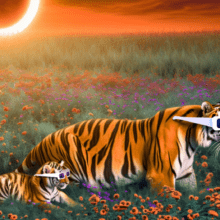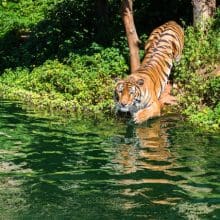5 Fascinating Facts About Food Choices: The Predatory Diet of Bobcats
The Untamed Appetite: Unveiling the Fierce Diet of Bobcats
Bobcats, also known as Lynx rufus, are fascinating creatures that inhabit various regions of North America. These elusive and solitary animals have a diverse diet that primarily consists of small mammals, birds, and reptiles. Understanding their food choices can provide valuable insights into their behavior and survival strategies. In this article, we will explore five fascinating facts about the predatory diet of bobcats.
1. Versatile Carnivores
Bobcats are highly adaptable predators that can thrive in a wide range of habitats, including forests, deserts, and swamps. This adaptability is reflected in their food choices, as they are known to consume a variety of prey species. While small mammals like rabbits and rodents form the bulk of their diet, bobcats are also opportunistic hunters that target birds, reptiles, and even insects when necessary.
For example, a study conducted in Arizona found that bobcats preyed upon a diverse range of animals, including cottontail rabbits, ground squirrels, lizards, snakes, and birds. This versatility in their diet allows bobcats to exploit different food sources depending on the availability and abundance of prey in their environment.
2. Ambush Predators
Bobcats are skilled ambush predators that rely on stealth and patience to capture their prey. They have a unique hunting strategy that involves stalking their target and then launching a surprise attack. This hunting technique is particularly effective when targeting small mammals like rabbits and rodents.
Research has shown that bobcats use a combination of visual and auditory cues to locate their prey. They carefully observe their surroundings, listening for the rustling of leaves or the sound of scurrying animals. Once they spot their prey, bobcats use their powerful hind legs to pounce on their unsuspecting victims, delivering a swift and lethal bite to the neck or head.
3. Nocturnal Hunters
Bobcats are primarily nocturnal hunters, meaning they are most active during the night. This nocturnal behavior is advantageous for several reasons. Firstly, it allows bobcats to avoid competition with other predators that are active during the day, such as coyotes and larger felids. Secondly, it provides them with a stealthy advantage, as their prey may be less alert and more vulnerable in the darkness.
Studies have shown that bobcats exhibit a peak in hunting activity during the twilight hours, known as crepuscular activity. This period, which occurs at dawn and dusk, offers favorable lighting conditions for bobcats to hunt effectively. By being active during these low-light periods, bobcats can maximize their chances of successful predation.
4. Dietary Preferences
While bobcats have a diverse diet, certain prey species are preferred over others. For example, studies have found that bobcats show a strong preference for rabbits, which can make up a significant portion of their diet. This preference is likely due to the abundance and availability of rabbits in many bobcat habitats.
However, bobcats are not solely reliant on rabbits. They are opportunistic hunters that will target other small mammals, such as squirrels and mice, when rabbits are scarce. Additionally, bobcats have been observed preying on birds, particularly ground-nesting species, and reptiles like lizards and snakes.
5. Impact on Ecosystems
As top predators, bobcats play a crucial role in maintaining the balance of ecosystems. By controlling populations of small mammals, they help regulate prey species and prevent overpopulation. This, in turn, has cascading effects on vegetation and other wildlife within the ecosystem.
For example, a study conducted in California found that bobcats played a significant role in reducing the population of invasive species, such as the eastern fox squirrel. By preying on these invasive species, bobcats indirectly benefit native wildlife and promote biodiversity.
Summary
Diet of Bobcats: Bobcats are versatile carnivores with a diverse diet that includes small mammals, birds, and reptiles. They are skilled ambush predators that rely on stealth and patience to capture their prey. Their nocturnal behavior and dietary preferences, such as a strong preference for rabbits, contribute to their survival and success as predators. Furthermore, bobcats play a vital role in maintaining the balance of ecosystems by controlling populations of small mammals and reducing the impact of invasive species. Understanding the food choices of bobcats provides valuable insights into their behavior and ecological significance.
Read More About Bobcats From Wikipedia





